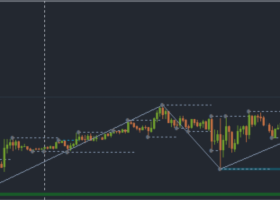
What is a "Tick Data" and How It Influences Expert Advisors?
What is a "Tick Data" and How It Influences Expert Advisors?
Tick data refers to the smallest unit of price movement in financial markets, capturing every change in price (or "tick") of a financial instrument. Unlike candlestick or bar data that aggregates price movements over fixed intervals (such as 1 minute, 5 minutes, etc.), tick data records each individual change in price as it happens, along with the exact time of the change. Tick data provides a highly detailed view of the market, including price changes, trade volumes, and bid/ask prices.
What is a "tick"?
A tick is a single change in price. For example, if the price of a currency pair changes from 1.2345 to 1.2346, that is considered one tick. Each tick represents a real-time update in the bid/ask prices or trade execution in the market.
Influence on Expert Advisors (EAs)
Tick data is crucial for the performance and accuracy of Expert Advisors (EAs), particularly in automated trading strategies that depend on fine-grained price movements. Here’s how it affects EA performance:
-
Precision in Backtesting:
- Accurate Simulation: Using tick data for backtesting allows for a highly accurate simulation of historical performance. It enables the EA to respond to every minor price change as it would have in real time, which is critical for scalping or high-frequency trading strategies.
- Granularity: With tick data, an EA can test how it would react to intra-candle price movements. This granularity can reveal performance variations that would not be visible with minute, hourly, or daily data.
-
Execution Timing:
- Real-Time Trading: In live trading, EAs rely on incoming ticks to trigger their buy/sell logic. The faster the tick flow, the more responsive the EA is to market movements. An EA designed to react quickly to small price changes (e.g., in fast-moving markets) may perform poorly with delayed or missing ticks.
- Latency Sensitivity: Ticks arriving late due to poor internet connection or broker inefficiency can affect the timing of trade entries and exits, leading to slippage or missed trades.
-
Risk of Overfitting in Backtesting:
- Too Much Detail: Backtesting with tick data might lead to overfitting, where the EA is tuned too precisely to historical market conditions, optimizing for minor price fluctuations that may not reoccur in the future. This can make the EA perform well in backtests but poorly in real markets.
-
Market Conditions and Slippage:
- High Volatility: In highly volatile markets, tick data becomes even more critical, as rapid price changes can lead to slippage (i.e., executing trades at a different price than expected). EAs that account for slippage based on tick data will handle these situations better than those using more generalized price data.
-
Scalping Strategies:
- Tick Sensitivity: Scalping EAs, which aim to make small profits from frequent trades, are particularly reliant on tick data. Without precise tick data, these strategies may fail to detect small price movements, which could lead to fewer opportunities and lower profits.
Summary:
Tick data offers detailed insight into price changes and is crucial for accurate performance assessment of EAs, particularly for high-frequency and scalping strategies. It influences backtesting accuracy, real-time execution, and overall EA performance. However, reliance on tick data also introduces the risk of overfitting in backtesting, so it needs to be used carefully.
Evren Caglar
Trader, Quant Trader, Developer


